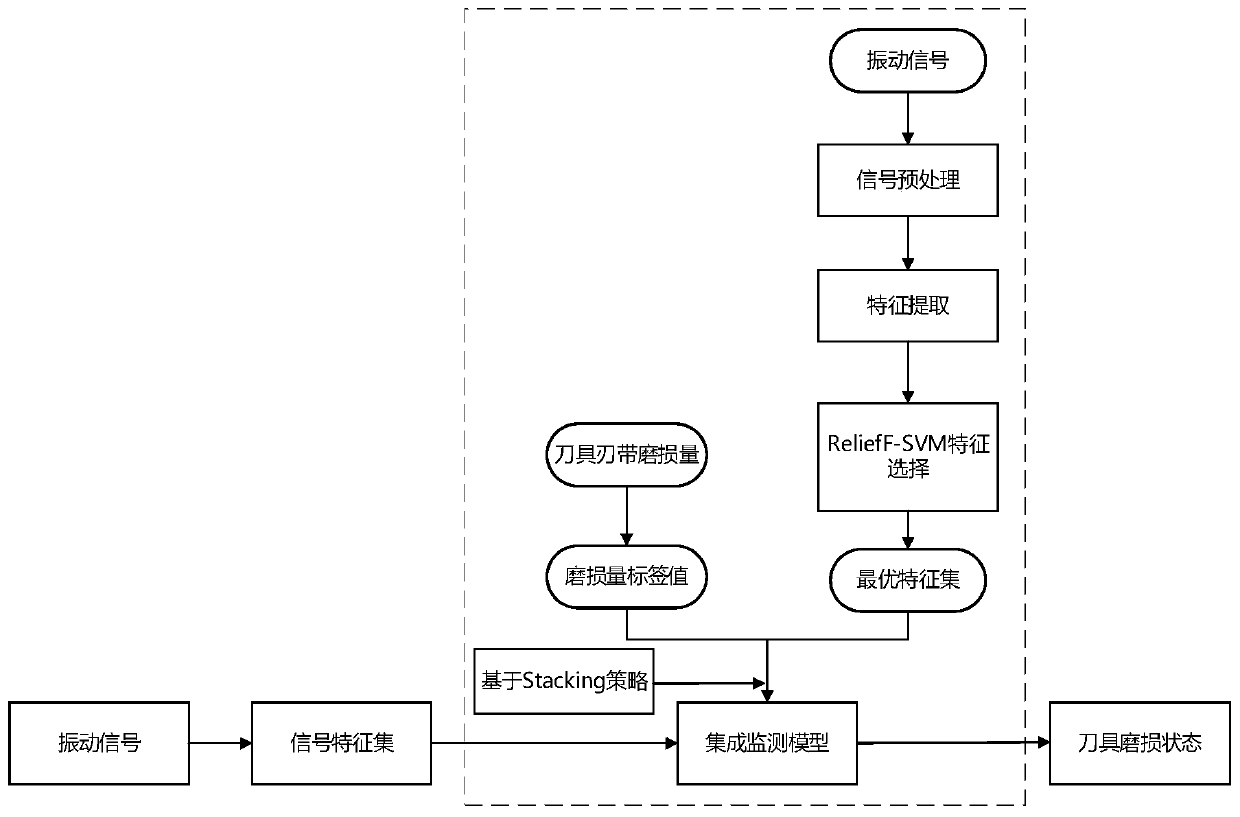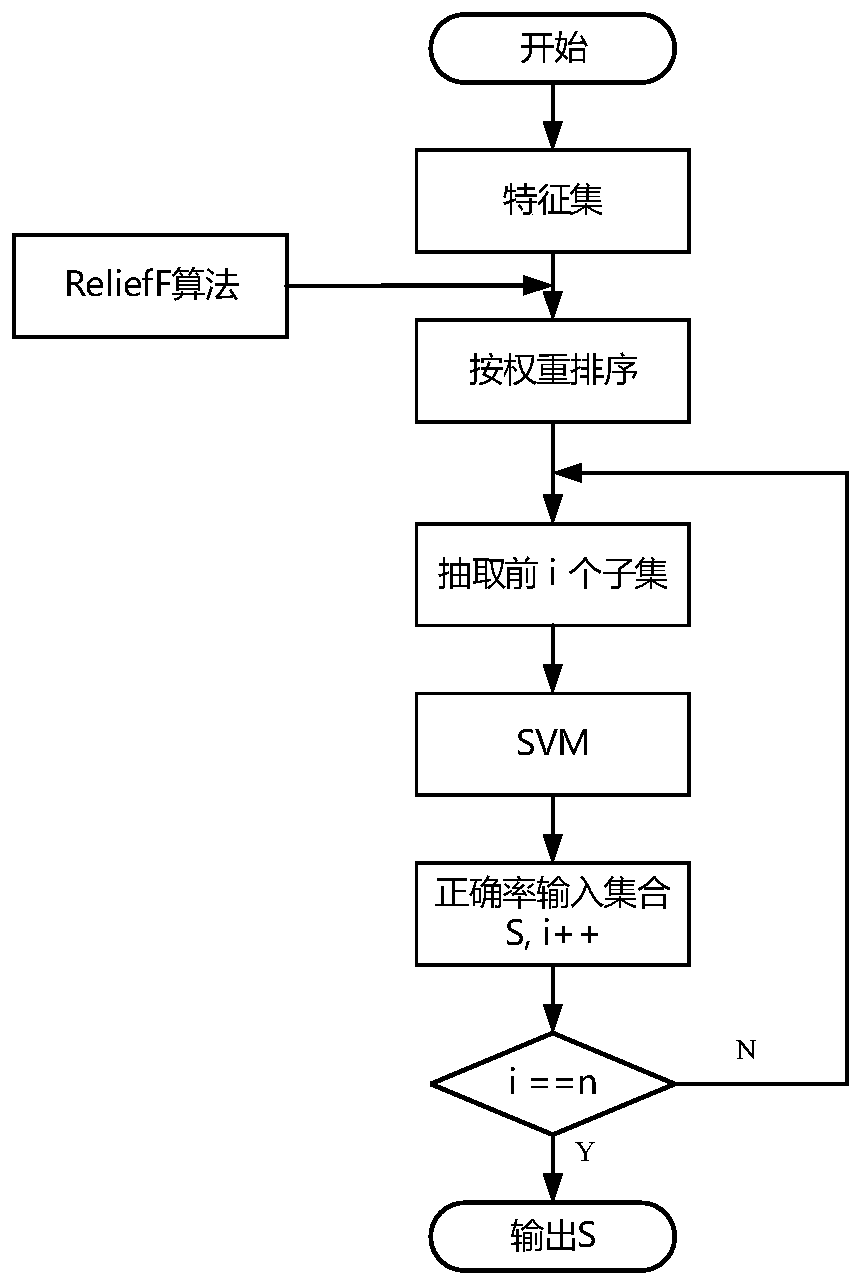Tool wear state monitoring method based on vibration signal and stacking integrated model
A vibration signal and tool wear technology, which is applied in manufacturing tools, measuring/indicating equipment, metal processing equipment, etc., can solve the instability of decision tree classification results, the difficulty of implementing large-scale training samples, and the inability of artificial intelligence technology to meet accuracy requirements, etc. question
- Summary
- Abstract
- Description
- Claims
- Application Information
AI Technical Summary
Problems solved by technology
Method used
Image
Examples
Embodiment Construction
[0038] The present invention will be described in detail below in conjunction with the accompanying drawings and specific embodiments, where the schematic embodiments and descriptions of the present invention are used to explain the present invention, but not to limit the present invention.
[0039] refer to figure 1 , the present invention is based on vibration signal and the tool wear state monitoring method of integrated model, comprises the following steps:
[0040] The first step is data collection.
[0041] Adsorb the three-way acceleration sensor on the non-rotating place of the machine tool spindle through the magnetic base, and use the acceleration sensor to collect the three-way vibration signal during the machining process of the machine tool; collect the vibration signal during the service life of the tool, extract the characteristic information of the vibration signal, and divide the characteristic data into training Data and test data, the training data is used ...
PUM
 Login to View More
Login to View More Abstract
Description
Claims
Application Information
 Login to View More
Login to View More - R&D Engineer
- R&D Manager
- IP Professional
- Industry Leading Data Capabilities
- Powerful AI technology
- Patent DNA Extraction
Browse by: Latest US Patents, China's latest patents, Technical Efficacy Thesaurus, Application Domain, Technology Topic, Popular Technical Reports.
© 2024 PatSnap. All rights reserved.Legal|Privacy policy|Modern Slavery Act Transparency Statement|Sitemap|About US| Contact US: help@patsnap.com










